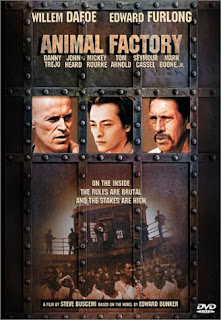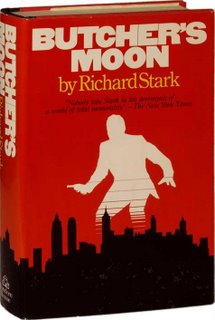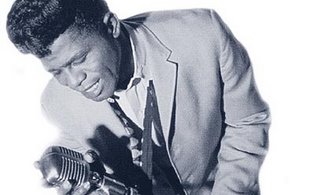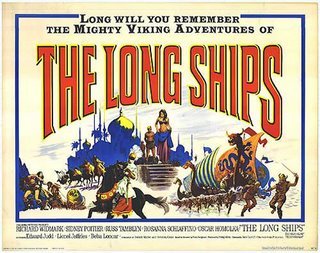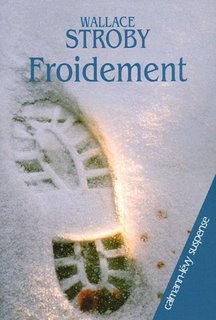

In conversation with a friend last week, the topic of television urban myths came up. You know the type - Mikey from the Life cereal commercial died from eating Pop Rocks and soda, Alice Cooper was Eddie Haskell on LEAVE IT TO BEAVER, etc. What prompted it, oddly enough, was the release on DVD of the first season of the BOZO THE CLOWN SHOW. The topic soon turned to the oft-repeated story about the tyke who, angry at losing a ring toss, told Bozo on live TV to "Cram it, clown!" before being warned that was a "Bozo No-No."
The story is at best apocryphal, though latter-day Bozo Larry Harmon has said it actually happened - though his story changes from time to time (also, there was no single television Bozo. Different actors played him in different markets. Individual stations purchased the Bozo "franchise" and then produced their own shows). That hasn't kept it from being passed on as fact though, and you'll occasionally find someone who says they actually saw it broadcast live. Ditto Soupy Sales and his "I see F, you see K" jokes. Fortunately, thanks to the internet, we now have a resource we didn't have when all of this stuff was originally being passed on to us as kids - www.snopes.com.
Snopes is the encyclopedia of urban legends, which are then confirmed, debunked or left uncertain (Snopes color codes them by verdict). Snopes classifies the Bozo story as "indeterminate" but likely false. The Soupy Sales jokes? Never happened. The Groucho Marx "I love my cigar too, but I take it out of my mouth once in a while" line? He never said it.
The phenomenon goes back even further. The 1930s kids show radio host who signed off and then said "That oughta hold the little bastards", not realizing the mike was still live? Totally fictional, but given further life by the "bloopers" records craze of the late 1960s and early '70s. But as Snopes also points out, those records mostly consisted of "re-creations," re-recordings and outright fabrications.
On the other hand, e-mail now allows these things to spread like wildfire. And a few days after the Bozo discussion, I got a flurry of forwarded messages claiming to have the true explanation of the final scene in last week's show-ending SOPRANOS episode. According to the e-mail, all the clues point to Tony being killed in that last cut-to-black moment, and that the diner where he and his family are eating is filled with characters from previous episodes, all of whom want Tony dead.
Though there may be some validity to the "Tony got killed" explanation (though I don't agree with it, as I wrote last week), the evidence the e-mail uses to prove its point is deeply flawed and in some cases totally false. Alan Sepinwall of The Star-Ledger had to go on record more than once debunking the theory point by point, but readers were still forwarding it to him days later.
As someone who's spent more than 20 years in the news business, I have a deep-seated animosity for these sorts of things - rumors masquerading as fact, arguments built on fiction, total untruths passed along as conventional wisdom. It makes me angry to get anecdotal e-mails ("Don't go to the malls this Halloween," "Don't flash your car lights" etc.) that have been forwarded by people who never once stopped to think about what they were passing along, or checking into whether it was true or not (or even likely) before they did.
The SOPRANOS e-mail is a relatively harmless example of this, but it's still the same thing - careless disinformation. And as news services move away from print and struggle to get things on-line as quickly as possible, there are more opportunities for these things to get out there, under the guise of actual news. Alan cites a Reuters story that quoted an HBO spokesman agreeing that the line "Everything turns black" in an earlier episode was a significant clue to explaining the finale. However, as Alan explains, there was never any such line. The Reuters story was eventually pulled and rewritten, but not before it had already been picked up by thousands of other news outlets. The SOPRANOS e-mail hasn't made it to Snopes yet, but I'm guessing it will before long.
Apologies for the soap-boxing. In return for your patience, and in keeping with our SOPRANOS theme, it's time for another giveaway, this time a copy of Alain Silver and James Ursini's great new collection GANGSTER FILM READER, featuring more than two dozen essays on the gangster film (and plenty of SOPRANOS content as well). But, of course, it comes with a trivia question:
In which of Donald Westlake's "Richard Stark" novels does Parker pull off a job in Monmouth County, N.J.?
First one to message me at my Web site with the correct answer is the winner.
And while you're searching the net for the answer, check out this brilliant recreation of a memorable scene from Martin Scorsese's CASINO.














